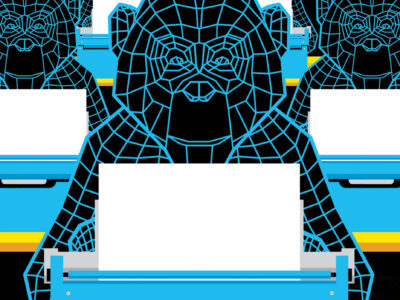IT began with an argument. Late last year, Elie Seidman EAS’97 and John Possumato W’82 L’85 were at a get-together in the office of a mutual friend. The group began debating the most efficient way to provide businesses with high-speed Internet access. Seidman favored wiring entire buildings for Ethernet — which allows for Web browsing at speeds dozens of times faster than current modems, but at a cost of several thousand dollars per month — and then running connections to individual offices. Possumato, though, claimed that an evolving technology called DSL (Digital Subscriber Line, a method of providing lightning fast online access over conventional phone wires) was capable of offering businesses the advantages of Ethernet at a fraction of the cost. The two agreed to stay in touch.
Seidman, who spent two summers with Microsoft while at Penn, and a year with the Trilogy software company after graduation, became convinced that DSL technology represented a feasible way of offering businesses fast Internet access at prices most could afford. A short time later, the pair found two additional partners, developed a business plan and launched a new venture, Wired Business, designed to cash in on what many experts believe is the future of Internet access. Says Possumato, who spent more than a decade doing sales and marketing for Ford and Jaguar, “Most big companies have no trouble paying $2,000 or $3,000 a month for Ethernet access. If you’re a smaller company, though, that much money is simply unaffordable. With DSL, there is nothing separating a small company from a large one.” Average companies could expect to pay anywhere from $150 to $300 per month for the technology, depending on the speed they chose, as well as a one-time installation fee of about $1,000.
Although commonly thought of as a new technology, DSL has been around for more than a decade. In the past 12 months, though, its use has undergone what Possumato describes as a “quiet revolution.” Bill Gates is a big fan of the technology, which he describes as “something to watch in 1999,” and the Dataquest market-research company recently predicted that there will be nearly 20 million DSL lines in service by the year 2003 (a 200-fold increase). Dell and Compaq said in December that they would begin equipping new computers with DSL modems, and America Online announced plans to begin offering DSL access to its millions of subscribers.
Closer to home, Penn officials are negotiating with Bell Atlantic to offer a version of the technology known as ADSL (Asymmetrical Digital Subscriber Lines) at a reduced cost to students living off-campus as early as next September. “All of the media attention DSL has begun to receive is fantastic,” Seidman says, “because it helps educate our customers, making our sales job a little easier.”
After a business signs on with Wired, Seidman and Possumato say they can have a DSL connection up and running in the customer’s office in about 30 days. With the connection established, the business can access the Web at speeds up to 30 times faster than today’s fastest modems, downloading information at a rate of more than 1.5 million bits per second and drastically reducing the frustration born of long delays on the “World Wide Wait.”
The technology can make all the difference in the world for anyone visiting a page which features photographs or streaming video. Downloading a complex, 16-megabyte image (like a detailed 3D-graphic), for example, would take nearly half an hour with a 56K modem. With a high-speed DSL connection, by contrast, downloading the image would take only 80 seconds.
Wired Business — which also offers e-mail and Web-page hosting — currently serves businesses in Philadelphia, Boston and New York, and hopes to expand to Chicago, Atlanta and other selected cities within the next six months. According to Seidman and Possumato, the company is on pace to have at least 1,000 subscribers in the three Eastern cities by year’s end, leading to projected revenues of more than $6 million. The pair plans to reinvest any profits from the next few years to help fund the company’s future expansion. And while taking the company public might make them and their two other partners multimillionaires, Possumato says he and Seidman are taking things slowly.
“Our priority is to build the company responsibly and carefully so as to have the option of taking the company public without being dependent on doing so.” In the meantime, the partners are logging long hours as they to try to build their company into a DSL powerhouse. “This is the frontier, the next big thing,” Seidman says. “People often talk about how pervasive technology — especially the Internet — has become. But that’s really not the case quite yet. There’s still a long way to go, and things like DSL are really pushing the envelope. It’s cool to be a part of it.”
— Yochi J. Dreazen C’99




